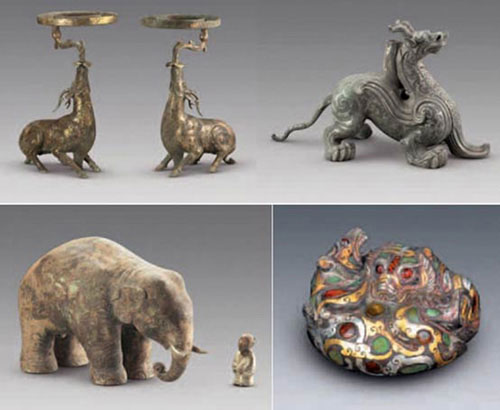Royal treasure in Luu Phi Tomb
The tomb of the 2,100-year-old Liu Liu, the eldest son of Han Cao Luu Bang, was unearthed in Jiangdu, Jiangsu Province, filled with gold and silver and ancient treasures.
>>> Ancient tombs are full of Chinese emperor's treasures
The tomb of Qi Wang Liu Feng was found on a mountain near populated areas in Jiangsu Province. In addition to being the eldest son of the imperial emperor of the Han Dynasty, Liu Feng was also the second king of Qi China, the vassals of the Han Dynasty, reigning in Jiang Do. When Han Cao nest was throne for 6 years, Qi Wang Han Xin was changed to the King's Department, Liu Feng made Qi Wang's successor, was rewarded with 70 citadel. However, because of that, Miss Hau wanted to poison him and Liu Phi to cut off the new land.
The king died in 128 BC when he was 26 years old, at 32 years old. Although the grave digers have touched Luu Phi's tombs a few times, archaeologists are happy to discover that there are still more than 10,000 precious artifacts made from gold, silver, copper and jade, according to the report. Specialist Chinese Archeology. They also found several original-sized chariots and dozens of other small cars.

Precious objects in the tomb - (Photo: Chinese Archeology)
Excavated from 2009 to 2011, the tomb area has a length and width of about 490m, including 3 main tombs, 11 graves of the price, 2 car and horse holes, 2 burial pits, according to the expert of Nanjing Museum. In particular, the largest mound with a length of 150m used to be a place for Qi Vuong's grave.
The mausoleum has two long tunnels leading to the burial room. This is also the place where many of the sacrifices and buried items are placed in order to serve the needs of Luu Phi's death, according to the old concept.
When the king was famous for his lavish habits and for his muscular strength, his tomb was full of weapons, including swords, spear heads, crossbows, jacks, knives and more than 20 chariot models. Archaeologists also found instruments to play music such as flocks, knobs on pearl strings. Money is also buried, and so far experts have searched for a vault containing more than 100,000 square-hole coins dating back to Qin Shihuang. Other everyday items were also found, as well as cookware and leftover food.
Sadly, the king's coffin was damaged and the body was lost. However, in the second tomb called M2, the experts found the coffin with jade, also the most impressive finding in the whole tomb, besides gold, silver and bronze items.'Although the central tomb has been looted, the structure of the jade coffin is still intact, meaning this is the first undamaged jade casket ever discovered in Chinese archaeological history' , According to the report on Chinese Archeology. And also the first time they found elephants and rhinos, showing that China began trading with foreign countries at that time.
When Liu Si passed away, Liu Xiang inherited the title of vassal king, called Qi Ai. In the seventh year since his father died, Luu Tuong discharged his troops to fight the La family. At this time, the Han Dynasty fell into the hands of Empress La Tri. Before the pressure from Qi Wang's army, power returned to the hands of Liu, and Liu Hang of Liu Bang became Han Wen Emperor.
- 10 biggest treasures of all time
- Mysterious treasure of the Japanese Royal: The most awaited thing in the moment of historical transfer
- Found the tomb of the Egyptian royal historian
- Discovered 4,000-year-old grave of the royal royal yacht of Egypt
- Discover treasure in the tomb of Qin Shihuang
- Excavation of the tomb of Queen Cao Cao's grandson
- Discovered the original Korean king's tomb after 1,000 years
- A tomb of 3,000 years may contain the treasure of Scythia prince
- Tomb of the Ming Dynasty - Qing Dynasty
- Discovered the 4500-year-old tomb of the anonymous Egyptian queen
- Egypt discovered the tomb of a 3,700-year-old royal princess
- Egypt discovered the tomb of the female singer of the Pharaoh era
 Green tea cleans teeth better than mouthwash?
Green tea cleans teeth better than mouthwash? Death kiss: This is why you should not let anyone kiss your baby's lips
Death kiss: This is why you should not let anyone kiss your baby's lips What is salmonellosis?
What is salmonellosis? Caution should be exercised when using aloe vera through eating and drinking
Caution should be exercised when using aloe vera through eating and drinking